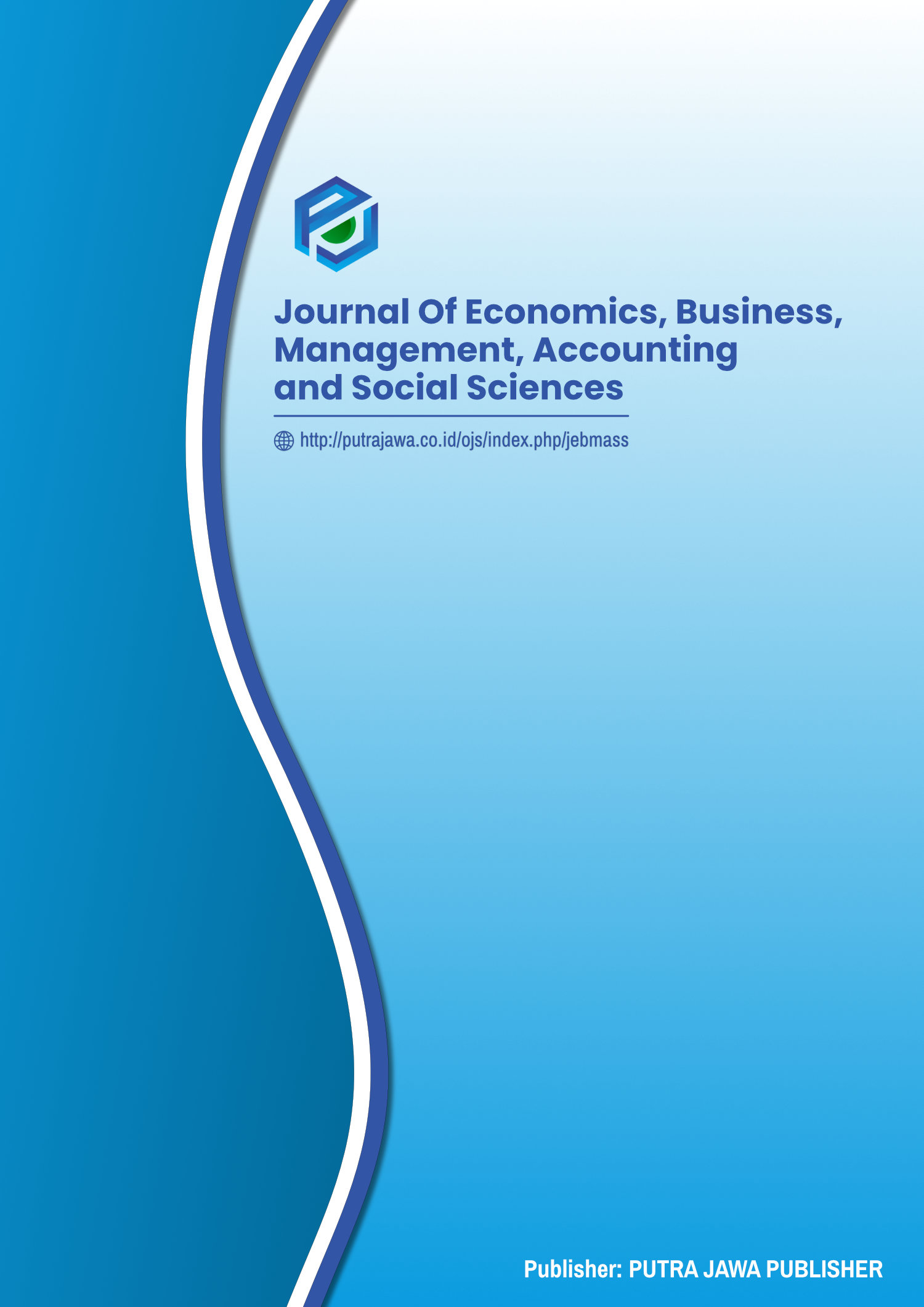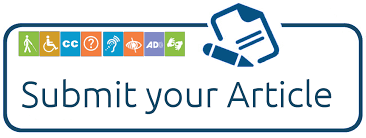Revitalisasi Akses Transportasi: Strategi untuk Memperbaiki Pendapatan Komunitas Pedesaan di Indonesia
DOI:
https://doi.org/10.63200/jebmass.v3i3.190Keywords:
akselerasi, akses, transportasi. strategi, pendapatan, komunitas, pedesaanAbstract
Revitalisasi akses transportasi menjadi faktor krusial dalam mempercepat pertumbuhan ekonomi di komunitas pedesaan, terutama di negara berkembang seperti Indonesia. Aksesibilitas yang lebih baik meningkatkan mobilitas tenaga kerja, memperluas jangkauan pasar bagi produk lokal, dan mengurangi biaya logistik, sehingga berdampak positif terhadap peningkatan pendapatan masyarakat (Gannon & Liu, 1997; Bryceson, Bradbury, & Bradbury, 2008). Studi ini bertujuan untuk menganalisis bagaimana modernisasi infrastruktur transportasi berkontribusi terhadap perbaikan kondisi ekonomi komunitas pedesaan di Indonesia. Penelitian menggunakan pendekatan kualitatif dengan analisis studi kasus pada beberapa wilayah terpencil yang mengalami pembangunan jaringan jalan dan fasilitas transportasi publik. Hasil penelitian menunjukkan bahwa revitalisasi transportasi berperan signifikan dalam membuka peluang ekonomi baru, mempercepat akses pendidikan dan layanan kesehatan, serta meningkatkan integrasi pasar lokal dengan pasar regional (Porter, 2014; Starkey & Hine, 2014). Namun, tantangan seperti ketimpangan akses, biaya pemeliharaan, dan kebutuhan adaptasi sosial tetap menjadi perhatian utama. Oleh karena itu, strategi revitalisasi harus mempertimbangkan keberlanjutan ekonomi dan partisipasi masyarakat lokal secara aktif dalam perencanaan dan implementasi.
Downloads
References
Ali, I., & Pernia, E. M. (2003). Infrastructure and Poverty Reduction—What is the Connection? Asian Development Bank.
Asian Development Bank. (2019). Asian Development Outlook 2019: Strengthening Disaster Resilience. Manila: Asian Development Bank.
Asian Development Bank (ADB). (2021). Rural transport and poverty reduction in Asia. ADB Publications.
Asian Development Bank (ADB). (2021). Connecting rural and urban markets: Policy innovations for inclusive growth. ADB Publications.
Banerjee, A., Duflo, E., & Qian, N. (2020). On the road: Access to transportation infrastructure and economic growth in China. NBER Working Paper.
Banister, D. (2008). The sustainable mobility paradigm. Transport Policy, 15(2), 73–80.
Barrett, C. B., Reardon, T., & Webb, P. (2001). Nonfarm income diversification and household livelihood strategies in rural Africa: Concepts, dynamics, and policy implications. Food Policy, 26(4), 315–331.
Booth, D., Cooksey, B., Golooba-Mutebi, F., & Kanyinga, K. (2019). Developmental regimes in Africa: Institutions, political settlements and economic growth. African Affairs, 118(472), 556-559.
Bourdieu, P. (1986). The forms of capital. In J. Richardson (Ed.), Handbook of Theory and Research for the Sociology of Education (pp. 241–258). Greenwood.
Bowen, G. A. (2009). Document analysis as a qualitative research method. Qualitative Research Journal, 9(2), 27-40.
Braun, V., & Clarke, V. (2006). Using thematic analysis in psychology. Qualitative Research in Psychology, 3(2), 77–101.
Bryceson, D. F., Bradbury, A., & Bradbury, T. (2008). Roads to poverty reduction? Exploring rural roads’ impact on mobility in Africa and Asia. Development Policy Review, 26(4), 459–482.
Calderón, C., & Servén, L. (2010). Infrastructure and economic development in Sub-Saharan Africa. Journal of African Economies, 19(suppl_1), i13–i87.
Chandler, A. D. (1962). Strategy and structure: Chapters in the history of the American industrial enterprise. MIT Press.
Chambers, R. (1983). Rural development: Putting the last first. Longman.
Chambers, R. (1995). Poverty and Livelihoods: Whose Reality Counts? Environment and Urbanization, 7(1), 173–204.
Chambers, R. (1997). Whose Reality Counts? Putting the First Last. Intermediate Technology Publications.
Chambers, R. (2020). Participatory development: Revisiting the classics. Routledge.
Cook, C. C. (2011). Transport: Infrastructure and Services. Asian Development Bank.
Creswell, J. W., & Poth, C. N. (2018). Qualitative Inquiry and Research Design: Choosing Among Five Approaches (4th ed.). SAGE Publications.
De Janvry, A., & Sadoulet, E. (2000). Rural poverty in Latin America: Determinants and exit paths. Food Policy, 25(4), 389–409.
Donaldson, D. (2018). Railroads of the Raj: Estimating the impact of transportation infrastructure. American Economic Review.
Dorosh, P., Wang, H. G., & You, L. (2012). Road connectivity, population, and crop production in Sub-Saharan Africa. Agricultural Economics, 43(1), 89–103.
Ellis, F. (2000). Rural livelihoods and diversity in developing countries. Oxford University Press.
Ellis, F., & Biggs, S. (2001). Evolving themes in rural development 1950s–2000s. Development Policy Review, 19(4), 437–448.
Estache, A., & Fay, M. (2007). Current Debates on Infrastructure Policy. World Bank Policy Research Working Paper No. 4410.
Faguet, J. P. (2014). Decentralization and Governance. World Development, 53, 2–13.
Flora, C. B., & Flora, J. L. (2013). Rural Communities: Legacy and Change (4th ed.). Westview Press.
Gannon, C., & Liu, Z. (1997). Poverty and Transport. World Bank Working Paper Series, Washington D.C.: The World Bank.
Grieco, M., Turner, J., & Kwakye, E. A. (1995). A tale of two continents: The urban transport crisis in Europe and Africa. Habitat International, 19(1), 15–26.
Grimsey, D., & Lewis, M. K. (2004). Public Private Partnerships: The Worldwide Revolution in Infrastructure Provision and Project Finance. Edward Elgar Publishing.
Gwilliam, K. (2011). Africa’s Transport Infrastructure: Mainstreaming Maintenance and Management. World Bank Publications.
Hettige, H. (2006). When do rural roads benefit the poor and how? An in-depth analysis based on case studies. Asian Development Bank.
IFAD. (2016). Rural Development Report 2016: Fostering Inclusive Rural Transformation. International Fund for Agricultural Development.
IPCC. (2022). Climate-resilient infrastructure: Policy and planning. IPCC Special Report.
Jedwab, R., & Storeygard, A. (2020). The average and heterogeneous effects of transportation investments: Evidence from sub-Saharan Africa 1960–2010. Journal of the European Economic Association, 18(6), 2824–2860.
Johnson, G., Scholes, K., & Whittington, R. (2017). Exploring Strategy: Text and Cases (11th ed.). Pearson Education.
Krishna, A., & Shrader, E. (2000). Cross-cultural measures of social capital: A tool and results from India and Panama. World Bank.
Krishna, A. (2022). Escaping poverty through transport and mobility. Oxford University Press.
Lincoln, Y. S., & Guba, E. G. (1985). Naturalistic Inquiry. SAGE Publications.
Litman, T. (2021). Evaluating transportation economic development impacts. Victoria Transport Policy Institute.
Lucas, K. (2012). Transport and social exclusion: Where are we now?. Transport Policy, 20, 105–113.
Lucas, K., Porter, G., & Tewodros, A. (2022). Digital mobility platforms and rural development in Africa and Asia. Transport Reviews.
MacQueen, K. M., McLellan, E., Metzger, D. S., Kegeles, S., Strauss, R. P., Scotti, R., Blanchard, L., & Trotter, R. T. (2001). What is community? An evidence-based definition for participatory public health. American Journal of Public Health, 91(12), 1929–1938.
Mathie, A., & Cunningham, G. (2003). From clients to citizens: Asset-based Community Development as a strategy for community-driven development. Development in Practice, 13(5), 474–486.
Mintzberg, H., Ahlstrand, B., & Lampel, J. (2005). Strategy Safari: A Guided Tour Through the Wilds of Strategic Management. Simon and Schuster.
OECD. (2016). Rural Policy Reviews: Linking People and Places. Organisation for Economic Co-operation and Development.
Pojani, D., & Stead, D. (2015). Sustainable urban transport in the developing world: Beyond megacities. Sustainability, 7(6), 7784–7805.
Porter, M. E. (1996). What is strategy? Harvard Business Review, 74(6), 61-78.
Porter, G. (2011). Mobility and transport in the 21st century: Sub-Saharan Africa in context. Journal of Transport Geography, 19(6), 1601–1610.
Porter, M. E. (2014). Competitive Advantage of Nations: Creating and Sustaining Superior Performance. Free Press.
Porter, G. (2014). Transport Services and Their Impact on Poverty and Growth in Rural Sub-Saharan Africa: A Review of Recent Research and Future Research Needs. Transport Reviews, 34(1), 25–45.
Riverson, J. D. N., Gaviria, J., & Thriscutt, S. (1991). Rural roads in Sub-Saharan Africa: Lessons from World Bank experience. World Bank Technical Paper, No. 141.
Roberts, P., & Sykes, H. (2000). Urban Regeneration: A Handbook. SAGE Publications.
Rodrigue, J.-P. (2020). The Geography of Transport Systems (5th ed.). Routledge.
Saragih, B. (2018). Rural Infrastructure Development and Poverty Reduction in Indonesia. Journal of Indonesian Development Studies, 1(1), 23-34.
Schipper, L. (2011). Transport and carbon emissions: Forecasts, options analysis, and evaluation. Transport Reviews, 31(1), 57–79.
Starkey, P., & Hine, J. (2014). Poverty and sustainable transport: How transport affects poor people with policy implications for poverty reduction. UN Habitat.
Teece, D. J., Pisano, G., & Shuen, A. (1997). Dynamic capabilities and strategic management. Strategic Management Journal, 18(7), 509–533.
Todaro, M. P., & Smith, S. C. (2015). Economic Development (12th ed.). Pearson Education.
van de Walle, D. (2002). Choosing rural road investments to help reduce poverty. World Development, 30(4), 575–589.
World Bank. (2009). World Development Report 2009: Reshaping Economic Geography. Washington, DC:
World Bank. (2015). World Development Report 2015: Mind, Society, and Behavior. World Bank.
World Bank. (2016). World Development Report 2016: Digital Dividends. World Bank Group.
World Bank. (2019). Rural transport and agricultural development. World Bank Report.
World Bank. (2020). Transport for Development: A Global Perspective. World Bank Publications.
World Bank. (2020). Infrastructure for development: Unlocking economic opportunities. World Bank Group.
World Bank. (2023). Digital infrastructure for rural connectivity: Global best practices. World Bank Report.
Woolcock, M., & Narayan, D. (2000). Social capital: Implications for development theory, research, and policy. World Bank Research Observer, 15(2), 225–249.
Yilmaz, S., & Haynes, K. E. (2021). Digital logistics and rural connectivity. Journal of Transport Geography.
Yin, R. K. (2018). Case Study Research and Applications: Design and Methods (6th ed.). SAGE Publications.
Downloads
Published
How to Cite
Issue
Section
License
Copyright (c) 2025 Sri Lestari¹ ; Ari Susanto² , Moh Wahib³

This work is licensed under a Creative Commons Attribution 4.0 International License.











